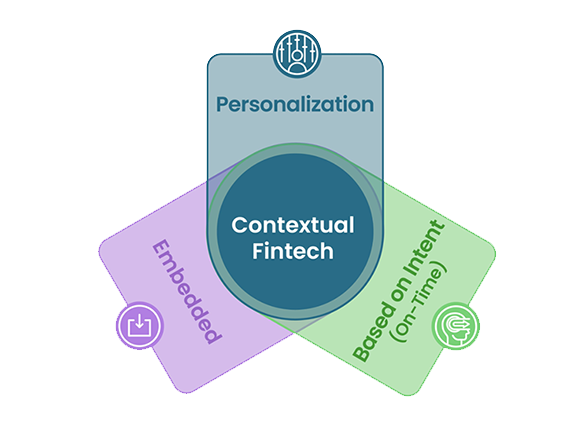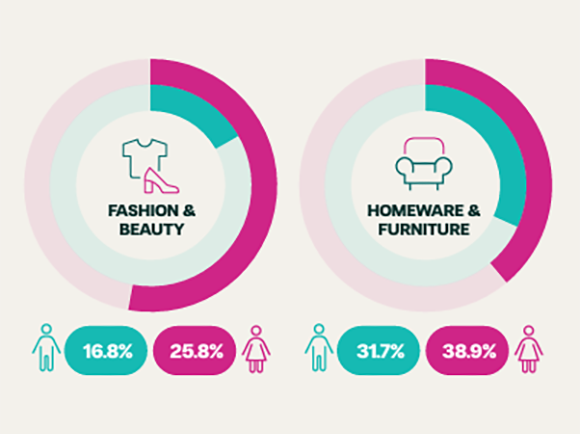How to stay in control of consumer relationships after they’ve bought through finance

As a merchant, it seems like there’s not much you can do once your consumer has completed a transaction using a retail finance loan, such as if they’ve bought through Buy Now, Pay Later (BNPL) or Short-term Interest-free Credit (STIFC).
Once the consumer has taken out the loan and the lender has paid you the balance, you are effectively taken out of the equation. Whatever happens down the road is between your consumer and the lender. You are, to put it bluntly, no longer in control of the relationship.
Yet still, if the consumer falls behind on their payments and ends up in debt, or if they’re not happy with their customer service, there’s a chance this could reflect badly on you. After all, you were the party who offered finance in the first place. What if your lending partner is aggressively chasing your consumer for unpaid bills, in turn making them feel victimised? What if the consumer has a grievance with the product supplied or the terms of the loan? The blame could fall back on you – all while you were out of control of what was happening.
Merchants invest a lot of time, effort and money making sure their brands are known for (among other things) high quality products and excellent customer service. High-quality after-sales support is no doubt another essential part of your brand image – and that should extend through Buy Now, Pay Later too.
Here’s how you, as a retailer, can ensure you remain in control of your relationships even after your consumers have bought through retail finance or Buy Now, Pay Later.
1. Prevention is the best cure
As a retailer, the last thing you want is for your consumer to end up facing penalties for a transaction made through your brand. And, while the majority of retail finance loans are paid back on time with no penalties, there are still some consumers who encounter problems. These may include circumstances such as:
-
The consumer ran into financial difficulties during the course of their repayments
-
They forgot to make a scheduled repayment
-
They refused to continue their repayments, perhaps because they never received the item or they were not happy with the quality
What may happen in these circumstances depends on the lender and their policies around late and/or missed payments. The usual course of action may go something like this:
-
The lender may warn the consumer that they have missed their payment and give them a second chance to pay
-
If the payment is still not received, the lender will start chasing the consumer with more direct communications, while also adding a penalty fare for a late payment
-
If the payment still remains outstanding, the lender may pass the debt on to a debt collection company, who will then add further fees and continue to chase the consumer
-
If the consumer has not paid after a certain period, the debt collection company may then pass the debt over to a bailiff who will recover the debt by other means, such as sending the consumer a court summons or seizing personal effects to make up the value of the debt – the bailiff may even add legal fees to the total cost
The point being that the process is usually long, time-consuming and anxiety-inducing – not to mention expensive – for everyone involved. The consumer is likely to come away from this experience with a mix of negative emotions. They may feel stressed, victimised and even angry.
In this state of mind, they may be motivated to talk poorly about their experience, either to friends or online. In this situation, your name – the name of your brand – is likely to pop up. Even though you had nothing to do with the relationship between the consumer and the lender, it was your products and your services that ultimately sparked their frustration. And of course, since you had no control over the relationship between the consumer and the lender, there’s very little you could have done to allay your consumer’s emotions.
Thus, the most impactful thing you can do, is to do everything in your power to ensure this event never comes to pass.
This means communicating proactively, concisely and consistently with your consumer before they enter into a relationship with a lender. This is where you should think about your consumer journey: whether they enter into your store or shop online, at which touchpoints they encounter retail finance, and what you can do to pre-emptively advise them about what’s to come.
Last year, Citizens Advice reported 42% of consumers who used BNPL “didn’t fully understand at least one part of what they were signing up for.” This shows why there is an urgent need for clear signposting at your checkout, either online or in-store. Your consumer should be shown a message saying something to the effect of: “Buying with Buy Now, Pay Later? Remember, [our brand] does not provide this loan. Any finance you take out will be handled by [lender’s brand].”
Better still, you can signpost them to advice on the repayments process, be it a webpage or a leaflet they can take away with them. This, again, should say something very forthright about your and your lender’s roles in the repayment process, e.g.: “Remember, once you’ve taken out a loan, you are obligated to pay it back on time to [lender’s brand]. If you have any concerns or questions, you should contact [lender’s brand] customer services.”
You can go even further at this stage to offer advice on what to do in extraordinary circumstances, such as when the consumer requires a refund. Perhaps include a line to the effect of: “If you have arranged a refund or exchange with [our brand], you should continue paying back your loan. We will repay the value of the item to [lender’s brand], who will then be responsible for returning the money to you.”
Advising your consumer ahead of time will ensure they are making an informed and balanced decision, thus reducing the risk that they will run into hardship further down the line.
2. Start an online help section
As your business grows, and as checkout finance solutions such as Buy Now, Pay Later grow ever more popular with consumers, you can expect the total number of sales made through finance to increase.
But remember, as the volume grows ever-higher, there may come a time when the number of consumers falling behind on their loans becomes unmanageable – especially if these consumers are approaching you, the merchant, for help.
Instead of trying to reply to all of these concerned consumers directly, perhaps it would be better to set up, or update your FAQ section to include plenty of help and useful information about Buy Now, Pay Later.
You don’t need to give any information about the lender themselves – which will be helpful if you use a multi-lender portal – but you could still include all the relevant information a consumer might need, such as:
-
The consumer’s rights (for instance, they should have a 14-day period in which to change their mind about their credit agreement)
-
What to do in the event of a refund or exchange
-
Who to speak to if they fall behind on their repayments
To give you some inspiration, here are three retailers we found who already provide online help sections regarding Buy Now, Pay Later:
-
We’re big fans of Currys’ help section, which includes a breakdown of what certain things mean along the Buy Now, Pay Later journey, plus a comprehensive FAQ section including what to do should the consumer have a grievance
-
John Lewis offers a breakdown of a consumer’s anticipated repayment schedule, plus an FAQ section
-
AO has a short online help section – although not much about what the consumer should do if things go wrong, it at least manages to stay on brand
As you can see in the examples above, with your own online help section you can control the conversation, both before and after the consumer agrees to the loan. This information will also be displayed alongside your brand identity, in your own tone of voice, and you can even add links if you want to take advantage of co-marketing opportunities, meaning you appear as the authority.
An online help section covers all the bases. When consumers approach you for help or advice, you can direct them immediately to this section so that they can help themselves – or, so that they learn how, why and when to approach the lender. As the volume of your BNPL sales increases, this could help to ease some of the pressure on your own customer services team (although you may wish to use this online resource to signpost consumers towards the appropriate customer services page or phone number).
As a side-note, we recommend training your in-store staff to direct consumers to this help page, too. Perhaps you may even wish to repurpose the online help section into a leaflet which can be handed out in-store. This, again, will help to ease some of the pressure on your staff who deal with consumers face-to-face.
3. Tighten up after-sales communications
Imagine you’re a consumer. You’ve just completed your shopping using a checkout finance product. Suddenly, your inbox is flooded with emails. “YOUR LOAN AGREEMENT,” reads one subject line. “DIRECT DEBIT AGREEMENT,” says another. Then, sooner or later, “PAYMENT DUE.” And if the consumer is truly unfortunate? “MISSED PAYMENT.”
But somewhere in the midst of these emails (perhaps coming from an indistinct, corporate identity whom the consumer is not familiar with) is another, more familiar tone of voice – that of the retailer, probably saying something much more pleasant, like “Thanks for shopping with us!”
Since the consumer came to shop with you, the merchant, the entity they trusted in the first place, they will presumably be much more interested in your communications. But, if they were to read these emails, would they see any recognition of the fact they’d completed their purchase through finance?
A consumer who has just completed their purchase may be in an anxious state of mind, especially if it was their first time taking out such a loan, and even more so if the amount they borrowed was substantial. They may be looking for reassurance that everything is fine, and that they have made a savvy choice (which, for all intents and purposes, they have).
Since you can’t guarantee that the lender who facilitated the transaction will say something of this nature, it might be up to you to do it instead. This is especially true since you will want to continue building a relationship with the consumer through dedicated after-sales service and support, so that they are inclined to become an advocate of your brand and shop again.
If you know that a consumer has completed their transaction with BNPL or any other form of retail finance, make sure they receive an automated email acknowledging this decision. You may want to use the opportunity to include helpful advice (perhaps linking to the online FAQ you’ve created, as above), and maybe even a reminder of their repayment schedule.
They may already have received this information from the lender, but there’s a good chance they may ignore these emails. They may even forget who they took the loan from in the first place!
Be especially sure to link to any advice that might help them in the event they can’t keep up with their repayments, or if they have a grievance with a product – remember, if the consumer has an issue with their loan, it will be your emails they look for in their inbox, rather than those from their lender.
You may even wish to turn this email into a nurture series. The more reassured your consumer feels about their purchasing decision, the more likely they may be to return – and purchase again through BNPL – in the future.
Another thing you may want to consider is constructing this communication programme in collaboration with your lender(s). That way, you (the retailer) can stay in control of your communications with the consumer while also helping to build trust in your lending partner, reminding them who is responsible for their loan, and ensuring that you are signposting your consumer towards the highest quality help and information.
Remember: your consumer’s loyalty is at stake
Therefore, don’t fall into the trap of:
-
Believing you don’t have to say anything
-
Assuming your consumer will understand the distinction between your brand and the lender
-
Thinking your duty of care ends once the consumer has been handed over to the lender
Since it was your brand that recommended Buy Now, Pay Later or retail finance in the first place, it’s your brand that remains on the hook while your consumer is paying back their loan. Get your communications procedure wrong, and you risk alienating your consumer, exacerbating their grief (should they experience any), and ultimately causing them to turn against your brand – worse still if they leave a negative review or tell their friends not to shop with you.
Remember: unhappy consumers share their bad experiences with about 9–15 people via word of mouth, while happy consumers will only tell an average of three people. A good reputation is hard-earned, while a bad reputation spreads very quickly.
Do not shy away from your responsibility to communicate about retail finance, Buy Now, Pay Later, and your consumer’s obligations. It is in your best interests to ensure your consumers are able to pay back their loans on time. The best way to do that is to be clear, concise and consistent with your communications, and to play an active role in the process – even after your role in the exchange has finished.
Give your consumers the information they need ahead of time. Make sure to keep them in the loop. Be there in case things go wrong. Remember, it’s your reputation that is at stake – with the right information at the right time, you can protect it and ensure your consumers have a wonderful experience with checkout finance.
You might also
be interested in
Keen to know more?








